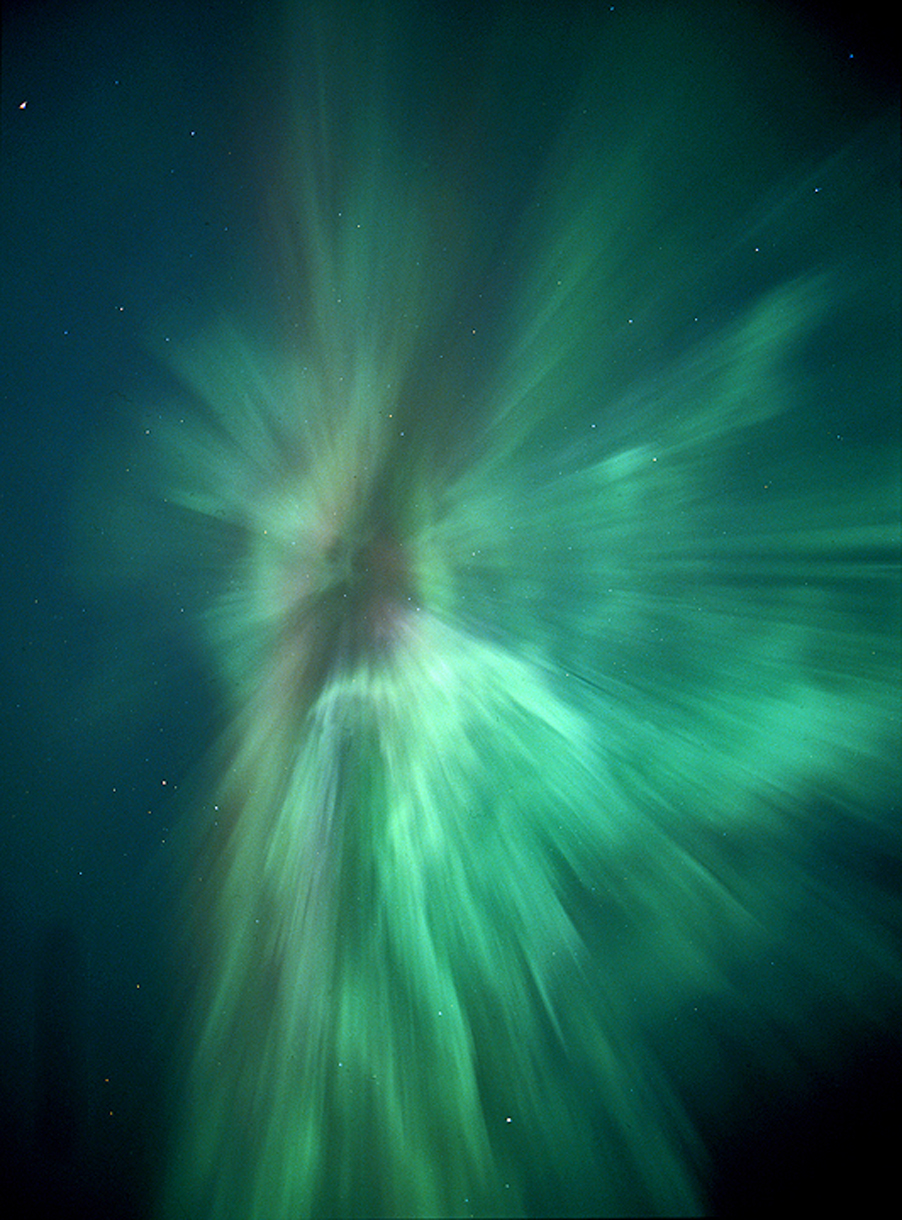A new multi-artist exhibit at Ptarmigan Arts, “Aurora Borealis,” not only offers some of the best northern lights photographers in Homer, it also shows that to take awesome photographs of the Alaska winter sky you don’t need the newest and best digital camera equipment.
Opening last week, and on display through January, photographs by Dennis Anderson, Don Pitcher, and the Wild North Photography partners Tom Collopy and Mary Frische capture the amazing displays Homer wishes for — but doesn’t always get — in these dark winter months.
Pitcher, Collopy and Frische use professional-grade digital single-lens reflex cameras that push the edge of how little light it takes to get a good image. In photography terms, that means how fast the digital sensors can be, rated in an International Standards Organization, or ISO number. For film, the higher the number, the more sensitive it is to light. That same standard is used for digital cameras. The Canon cameras these photographers use can shoot at ISO 1600 or higher. An exposure might be 30 seconds or less.
Anderson kicks it old school, with 4-inch-by-6-inch film at ISO 100. His Frankencameras, the name given to his equipment by his brother, artist Deland Anderson, are cobbled together with surplus military cameras and lenses, like a Leitz Elcon lens he got from a U-2 high-altitude spy plane camera. Anderson doesn’t even use a shutter, he said. He takes a lens cap on and off to make his 40-second exposures.
In some of Anderson’s photographs, those long exposures lead to funny photograph artifacts, like a blurry shadow in one photo that’s his head peering at the camera. The beauty of the northern lights as compared in photographs also shows something the human eye can’t always see: the glory of the image in its form, color and intensity.
Film and digital sensors are more sensitive than the rods and cones of the human eye. A faint green glow on the northern horizon appears as a vivid green shimmering curtain in the photograph. It even picks up other colors.
“I’ll take the picture and there will be a little red I didn’t see,” Pitcher said.
Because the camera takes a long exposure, and the northern lights don’t stay still, in effect the image also is a multiple exposure. It’s the same effect of moving cars on a slow shutter speed. The car and its lights appear not as a single dot, but a band of light moving across the frame.
That’s one defect of faster digital cameras. A fast exposure will capture that split-second shimmer of the aurora.
“It won’t be as dramatic,” Pitcher said.
All the photographers face the same challenge: finding good viewing and staying warm while doing so. Collopy and Frische once went to Atigun Pass north of Fairbanks and waited all night for awesome images. With their cameras set up outside, they stayed warm in their camper. But how to take shots?
“We use a remote (shutter) so we can stay in the car and be warm,” Frische said.
Anderson has a different method for staying warm. He sets up his film cameras on separate tripods 30 yards apart.
“I walk back and forth,” he said.
For hints and suggestions on photographing the auroras, see the above box. The University of Alaska Fairbanks Geophysical Institute posts aurora forecasts on its website at www.gi.alaska.edu/AuroraForecast. The forecast for later this week is low to moderate, with good viewing north of Talkeetna.
Michael Armstrong can be reached at michael.armstrong@homernews.com.


